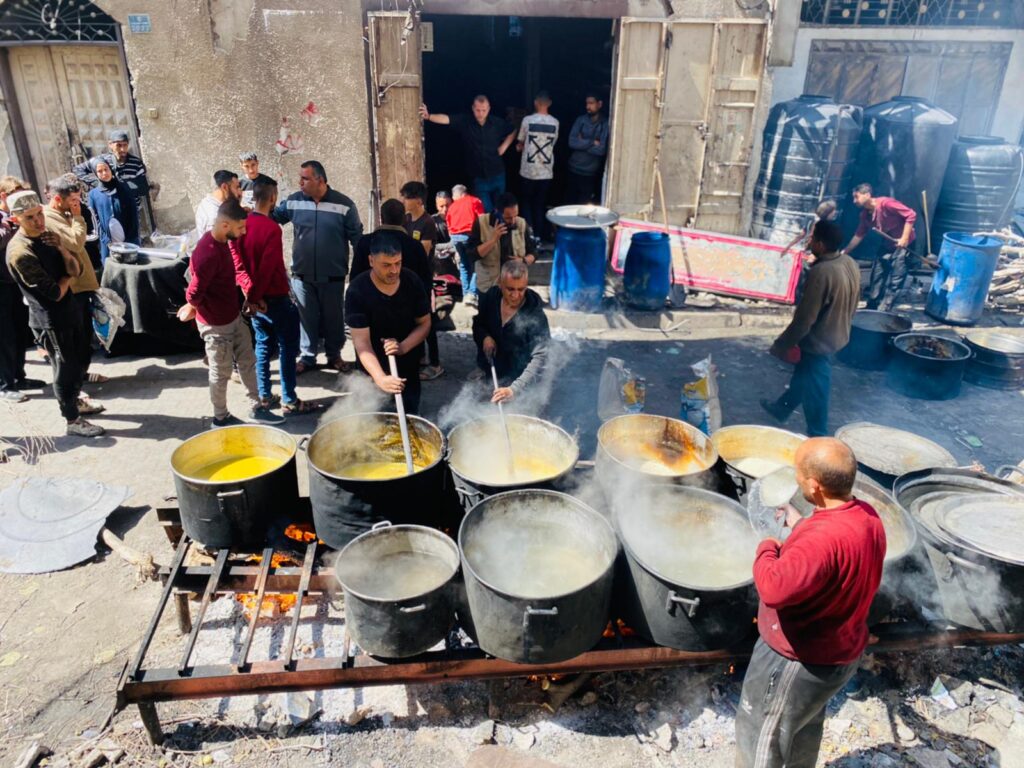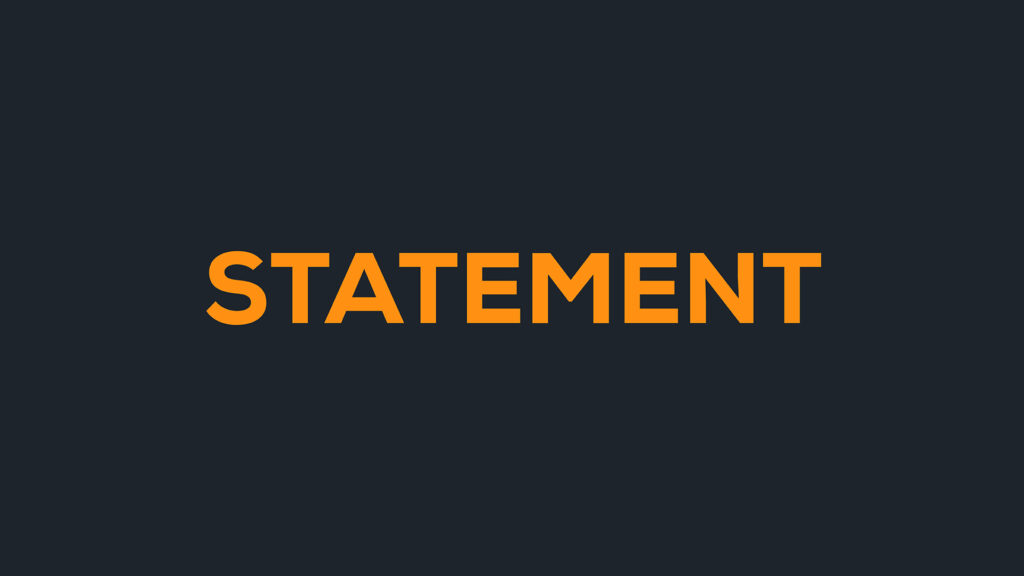Does Aid to Gaza Actually Reach People in Need?
Is aid actually getting into Gaza?
In short, yes. The aid coming into Gaza is grossly insufficient but it is getting in.
Debunking Myths
Despite Anera’s daily reports of deliveries, we still regularly hear from people who are surprised to learn that any aid at all is reaching Gaza. We hope to address some of the confusion here and answer common questions about if and how aid actually reaches people in need in Gaza.
Anera’s team in Gaza has delivered many millions of humanitarian relief items since the war began on October 7, 2023. Our Gaza staff has achieved seemingly miraculous feats by initially using available funds to buy goods locally from known and trusted vendors and farmers, and subsequently also by partnering with other organizations to organize and distribute truckloads of donated items shipped into Gaza.
Purchasing Goods Locally in Gaza
Because Gaza has been under a tight blockade since 2007, and has often been described as “the world’s largest open-air prison,” a myth has grown that Gaza had no economy of its own and therefore totally relied on outside aid. The truth is that Gaza has always had its own economy, despite being severely hampered by the blockade. There are/were vendors across the territory that have maintained warehouses where they have stored and sold goods of all kinds.
In the first weeks of the war, because no trucks were allowed into Gaza, Anera’s Gaza team relied solely on sourcing and purchasing food, medical supplies and other aid from vendors within the territory.
When the war came and the economy was disrupted, many of the vendors in Gaza had stocks of items in their warehouses that they could no longer distribute through retail outlets. Distribution issues only worsened as warfare reached more areas of Gaza, displacing populations and cutting off access.
Our staff in Gaza have deep connections in the communities they serve and relationships with vendors throughout the territory. With the onset of war, the team sprung into action and contacted trusted, pre-vetted vendors to purchase supplies to be distributed to besieged and displaced families.
As the war has worn on, vendors’ supplies have run low, but there are still sources Anera is able to draw from, especially in the isolated north of Gaza as Israeli forces move out and access to stocks reopen.
Delivering Fresh Vegetables and Fruits
One of Anera’s major food relief projects in Gaza is the delivery of fresh produce from Gaza farms. Though nearly half of Gaza's arable land is damaged with significant losses in infrastructure and greenhouses, Anera maintains extensive contacts with agricultural cooperatives and farmers throughout the territory and has therefore been able to source vegetables from those fortunate enough to keep their crops growing.
Our fresh produce deliveries across Deir Al Balah, Rafah and Khan Younis began on October 23 and they continue to this day. Cooperatives help farmers to collect essential and available vegetables (tomatoes, potatoes, cucumbers). Anera’s agronomists have arranged the distribution of enough fresh produce to make many millions of meals. Each vegetable basket serves an average family of six for about five days. Our interventions also help poor farmers keep their businesses going.
Making Hot Meals
Anera has set up seven tekias (community kitchens): three in Rafah, two in Khan Younis, one in the middle area and one in Jabalia, North Gaza. Each kitchen is staffed with multiple chefs and helpers who make scores of large pots of filling, hot meals. Each pot can make enough food to serve 300. People come to our kitchens with receptacles, which volunteers fill with food, altogether serving between 70,000 and 100,000 people daily. At times, we have flour and yeast for making fresh bread.
Food for the meals comes from local vendors (particularly in Jabalia) and, more and more, from trucks bringing food into Gaza, as supplies within the territory have become depleted. Anera also needs to bring in supplies like wood charcoal to make fire for cooking the meals.
Paying for Items Bought Within Gaza
Anera is able to pay vendors, staff and contractors, mostly through the Bank of Palestine, which is still operating in Gaza. There are still some 12 operational ATMs in Gaza.
Bringing Trucks into Gaza
One common misunderstanding is that there are no trucks getting into Gaza (or, conversely, that there are plenty of trucks getting in). It’s true that, during the initial two weeks of the conflict, Israel blocked all goods into Gaza, a stark contrast to the usual influx of 5,000-7,000 trucks during a similar period.
Since October 21, trucks have been allowed in, but the flow has been sporadic and significantly lower than before October 7, 2023. The UN monitors truck arrivals daily, with the highest recorded at 300 during a brief ceasefire in late November. On most days, fewer than 200 trucks enter, less than half of the pre-war average.
Throughout the nearly 150-day conflict, only around 13,300 trucks have entered Gaza, far below the necessary 75,000. This inconsistent and inadequate aid flow falls well short of addressing the humanitarian crisis in Gaza.
Nightmarish Logistics
It is also important to note that the logistical hurdles to getting trucks into Gaza are formidable and convoluted. It is virtually impossible to ship goods through Israel proper, the way Anera and other international aid groups had done business in the past. Now, shipments have to pass through Egypt, or Jordan and Egypt, to get to Gaza, sometimes on long journeys. And each country has their own bureaucratic requirements and security controls. Overly burdensome Israeli inspection mechanisms also exacerbate delays, as each shipment has to be offloaded and checked for “dual-use” materials that are barred from passage and removed from pallets. If any restricted item is found (or declared), the entire truckload is rejected.
Trucks filled with essential supplies consequently wait and wait at border crossings, just a stone’s throw away from people who are starving and living in desperation.
Anera’s Trucks
After October 21, 2023, when Israel began to allow limited quantities of outside aid into Gaza, Anera and its partners started to bring in trucks carrying food, water, medicines, bedding, hygiene items and more.
As of this writing, Anera has brought in more than 300 trucks (see the latest on our daily response log). Some of the goods trucked in are designated to go directly to Anera, while other goods are brought in by other organizations and UN agencies, who then partner with Anera to complete the last-mile delivery to the intended recipients. In either case, Anera packages or cooks and delivers that aid to those who need it most.
Delivering Aid in the North of Gaza
Delivering aid to the north of Gaza is extremely difficult, as intense security risks limit the amount of humanitarian shipments that are able to travel there. In fact, northern Gaza has been almost completely cut off from aid since the beginning of the war in October.
In response to this humanitarian crisis, Anera has expanded our food relief efforts to reach families in the north. As one of very few organizations providing aid in the area, Anera’s ability to respond effectively hinges on our commitment to localization and our well-established roots within the community.
Anera’s staff of four in the north spearheads humanitarian relief efforts on the ground. Since February 1, Anera has been providing 20,000 meals daily to families in Jabalia. Procuring food locally from vendors, the team coordinates meal preparation at a Jabalia kitchen, where families come daily and collect their food. The team also sends meals in pots to areas far from the kitchen so people do not have to walk long distances. Given the area’s limited accessibility, Anera often transports food on donkey carts, which is a testament to the extraordinary lengths to which our team will go to ensure aid reaches those in need.
We are also distributing basic food parcels – again, purchased from local vendors in the north – to families filled with what is available on the local market. They include potatoes, carrots, lemons, cooking oil, tomato paste and za’atar. Each parcel weighs five kilograms (11 pounds). Though minimal, the parcels are helping starving families.
At the end of February, our staff in Gaza successfully delivered food aid to displaced people in Gaza City. Two trucks of aid, donated by GEM, included 580 10-kilogram bags of macaroni, 400 five-liter bottles of cooking oil, 81 50-kilogram bags of flour, and 3,168 1.5-liter bottles of water. The trucks crossed over from the south to the north and distributed the items to needy families there.
Anera’s Remarkable Community Delivers the Impossible
Anera has 50+ years of experience providing relief and development aid in Palestine. The organization has been there through the 1968 displacements, intifadas, the building of walls, the Gaza blockade and numerous bombardments, and the daily challenges of delivering in constantly difficult circumstances. But the war that began on October 7, 2024 in Gaza has ushered in the most harrowing of times, when the needs and devastation are at unprecedented levels.
Anera’s community was and is ready to rise up to meet what the occasion requires. Our teams in Gaza, Ramallah, Jerusalem, Cairo, Amman and the US work together and with the appropriate parties – such as governments, military-civilian coordinators, logistics companies, humanitarian actors, donors and institutional partners – to coordinate the necessary arrangements for delivering aid to Gaza.
Our 13 Gaza colleagues are working diligently, though they have been displaced from their homes and are staying in shelters with little food, water or electricity. Despite the very difficult circumstances, however, they are doing everything they can to deliver aid to their fellow Gazans, despite the dangers. They all come from the communities they serve, so they are able to quickly identify areas of need and respond immediately as funds become available.
Behind everything Anera is able to accomplish are our incredible partners, institutional funders and donors. Supporting our Gaza Emergency response are ADRA, America’s Community Council, the American Federation of Teachers, Americares, AstraZeneca, BodyTree Studio, Brother’s Brother Foundation, CMMB, Creative Associates, Direct Relief, Dubai Cares, Foundation for Middle East Peace, Global Empowerment Mission, HADI, Health Partners International Canada, Helping Hand for Relief and Development, Humanity First UK, Humanity First USA, International Health Partners, International Relief Teams, Islamic Relief USA, JK Community, Macquarie Group, Malala Fund, MedGlobal, Muslim Aid USA, Mysk, Nvidia, PCRF, Pfizer, Pharmacists Without Borders, Project HOPE, Together Rising, UBS, UNICEF, United Methodist Committee on Relief, UNOCHA, UNRWA, WeCare.id, WFP, the World Bank’s Community Connections, World Central Kitchen, and over 50,000 individual donors from 130 countries.
Join Us!
Your donation will help displaced civilians in Gaza in desperate need by allowing us to buy goods locally and facilitating our importation of other items into Gaza. It is not easy, and we are not getting either the quantities or speed needed, but our team knows how to work to keep aid moving to those who need it most.


